Click on images to enlarge
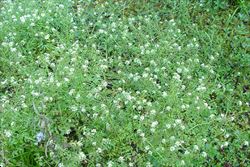
dense infestation (Photo: Sheldon Navie)
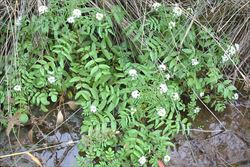
habit (Photo: Sheldon Navie)
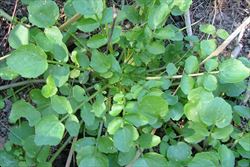
rosette of lower leaves (Photo: Sheldon Navie)
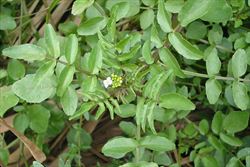
upper leaves (Photo: Sheldon Navie)
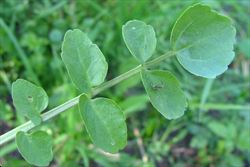
close-up of once-compound leaf (Photo: Sheldon Navie)

close-up of leaf underside (Photo: Sheldon Navie)
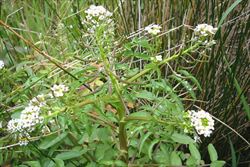
flower clusters and immature fruit (Photo: Sheldon Navie)
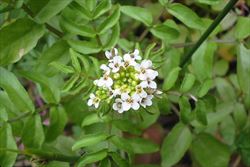
flowers (Photo: Sheldon Navie)
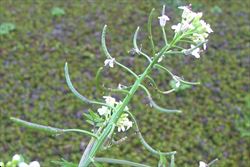
young fruit (Photo: Sheldon Navie)
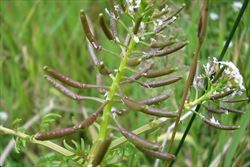
immature fruit (Photo: Sheldon Navie)
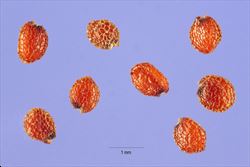
close-up of seeds (Photo: Steve Hurst at USDA PLANTS Database)
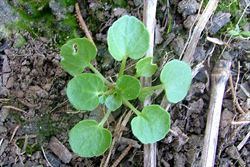
seedling (Photo: Sheldon Navie)
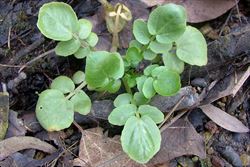
young plant (Photo: Sheldon Navie)
Scientific Name
Rorippa nasturtium-aquaticum (L.) Hayek
Synonyms
Nasturtium officinale W.T. AitonRorippa nasturtiumaquaticum (L.) HayekSisymbrium nasturtiumaquaticum L.
Family
Brassicaceae (Queensland, New South Wales, the ACT, Victoria, Tasmania, Western Australia and the Northern Territory)Cruciferae (South Australia)
Common Names
great watercress, green watercress, nasturtium, true watercress, two row watercress, two-row water-cress, two-row watercress, two-rowed watercress, water cress, water-cress, watercress, white watercress
Origin
Native to Europe, the Azores, the Madeira Islands, the Canary Islands, northern Africa (i.e. northern Algeria, Egypt, northern Libya, Morocco, Tunisia), western Asia, Pakistan and western China.
Cultivation
Watercress (Rorippa nasturtium-aquaticum) has been widely cultivated in Australia and is sometimes used as a salad vegetable.
Naturalised Distribution
Widely naturalised in the southern and eastern parts of Australia (i.e. in southern and central Queensland, eastern Nre South Wales, the ACT, Victoria, Tasmania, many parts of South Australia and south-western Western Australia). Also naturalised on Norfolk Island.
Also widely naturalised elsewhere including the USA, New Zealand and southern Africa (e.g. South Africa and Zimbabwe).
Habitat
A common weed of waterways, wetlands, swamps, lakes, ponds, irrigation channels, drainage lines and other wetter habitats in temperate and sub-tropical regions.
Habit
A long-lived (i.e. perennial), semi-aquatic, herbaceous plant with low-growing or semi-upright (i.e. decumbent or ascending) stems 10-80 cm long.
Distinguishing Features
- a herbaceous plant that grow in or near water, with low-growing or semi-upright stems 10-80 cm long.
- its green stems are hollow, hairless and often produce roots at their lower joints.
- its leaves (2-12 cm long) are either deeply-lobed or once-compound with 1-5 pairs of lobes or leaflets.
- its small white flowers are arranged in loose elongated clusters, each flower with four white petals (3-6 mm long).
- its straight or slightly curved fruit (10-20 mm long and 2-2.5 mm wide) are hairless and almost cylindrical in shape.
Stems and Leaves
The green stems are hollow and often produce roots at their lower joints (i.e. nodes). These stems are angular, hairless (i.e. glabrous), and often float on top of the water surface.
The alternately arranged leaves are hairless (i.e. glabrous) and either deeply-lobed (i.e. lyrate-pinnatisect) or once-compound (i.e. pinnate). These leaves (2-12 cm long) have 1-5 pairs of lobes or leaflets, with the end lobe/leaflet being larger than the others. The leaf or leaflet margins are bluntly-toothed (i.e. crenate) to entire with rounded tips (i.e. obtuse apices).
Flowers and Fruit
The small flowers (4-10 mm across) are borne on stalks (i.e. pedicels) up to 10 mm long and are arranged in loose elongated clusters (i.e. racemes). The clusters contain 10-25 flowers and elongate in fruit, eventually reaching up to 20 cm in length. Each flower has four small green sepals (2-3 mm long) and four larger white petals (3-6 mm long). They also have six stamens (2-3 mm long) and an ovary topped with a short style (0.5-1 mm long) and stigma.
The straight or slightly curved fruit (i.e. siliquae) resemble small pods. These fruit (10-20 mm long and 2-2.5 mm wide) are hairless and almost cylindrical in shape (i.e. sub-cylindrical). They contain two rows of seeds on either side of a central division (i.e. false septum). The small seeds are rounded or egg-shaped (i.e. ovoid) and about 1 mm across.
Reproduction and Dispersal
This species reproduces by seed and also vegetatively via stem segments.
Seeds and stem segments are commonly spread by water, especially during floods. They may also be dispersed in mud attached to animals and vehicles.
Environmental Impact
Watercress (Rorippa nasturtium-aquaticum) is regarded as an environmental weed in Queensland, New South Wales, Victoria, Tasmania, South Australia and Western Australia.
Legislation
Not declared or considered noxious by any state government authorities.
Similar Species
Watercress (Rorippa nasturtium-aquaticum) may be easily confused with one-rowed watercress (Rorippa microphylla), and is also relatively similar to yellow marsh-cress (Rorippa palustris) and creeping yellow cress (Rorippa sylvestris). These species can be distinguished by the following differences:
- watercress (Rorippa nasturtium-aquaticum) is a long-lived (i.e. perennial), creeping or semi-upright, plant with white flowers. Its relatively large fruit (10-20 mm long) have two rows of seeds on either side on of a central division (i.e. false septum).
- one-rowed watercress (Rorippa microphylla) is a long-lived (i.e. perennial), creeping or semi-upright, plant with white flowers. Its relatively large fruit (15-30 mm long) have one row of seeds on either side on of a central division (i.e. false septum).
- yellow marsh-cress (Rorippa palustris) is a short-lived (i.e. annual or biennial) upright plant with pale yellow flowers. Its relatively small fruit (5-9 mm long) have two rows of seeds on either side on of a central division (i.e. false septum).
- creeping yellow cress (Rorippa sylvestris) is a long-lived (i.e. perennial), creeping or semi-upright, plant with bright or light yellow flowers. Its relatively small fruit (4-15 mm long) have two rows of seeds on either side on of a central division (i.e. false septum).

